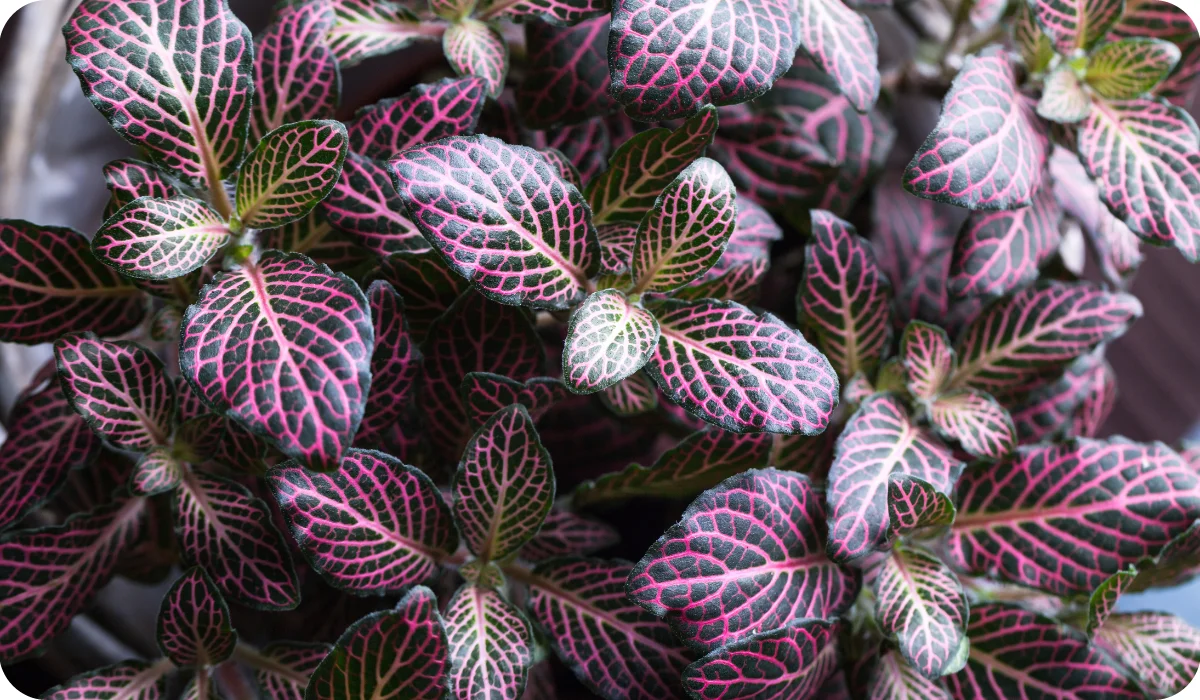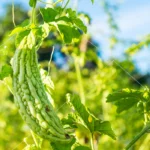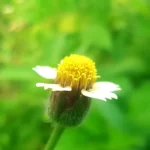Comprehensive Guide to Growing and Caring for Fittonia (Nerve Plants) – An Introduction
Fittonia, also known as Nerve Plants, are beautiful foliage plants native to the rainforests of South America. They are highly valued for their vibrant leaves with intricate veining patterns. In addition to their visual appeal, Fittonia plants offer numerous benefits, making them an excellent choice for indoor gardening. This comprehensive guide will provide practical and actionable information to help you successfully grow and care for Fittonia plants.
What is Nerve Plant (Fittonia)
Fittonia plants, scientifically known as Fittonia albivenis, belong to the Acanthaceae family. They are characterized by their stunning veined leaves, which come in various colors such as green, white, and red. Fittonia plants are popular indoor plants due to their compact size and low-light tolerance.
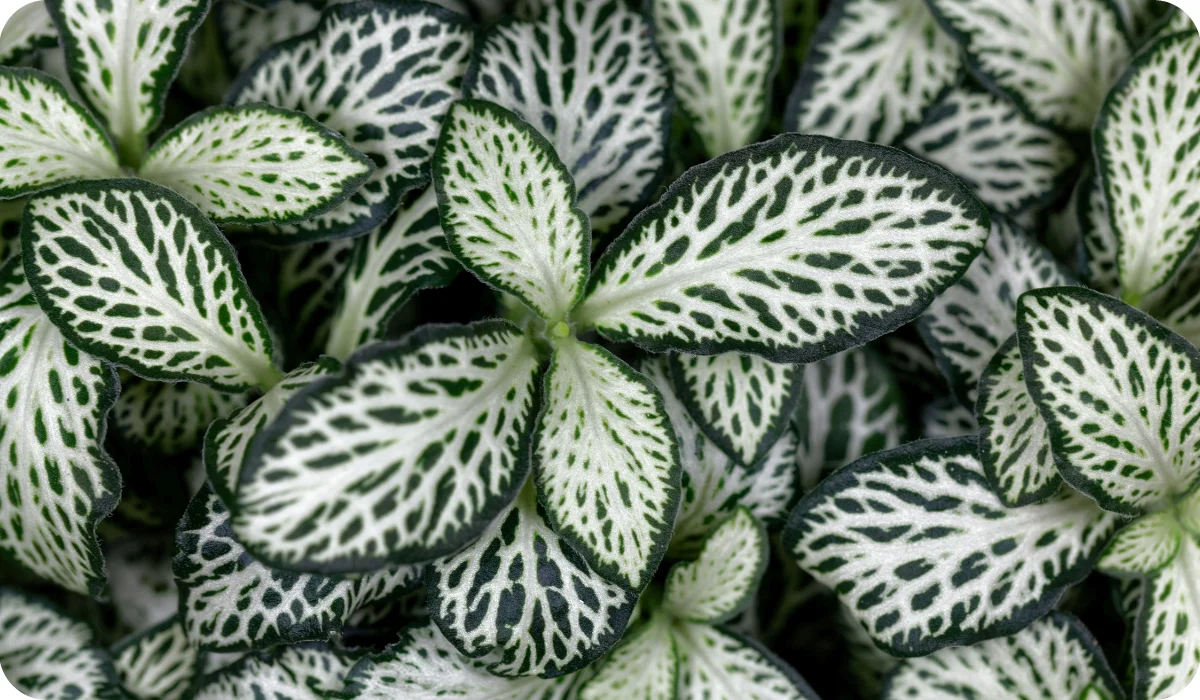
Leaves of a nerve plant, Fittonia albivenis
Why Grow Nerve Plants at Home – Its Importance
Growing Fittonia plants at home offers several advantages beyond their aesthetic appeal. These plants are known for their air-purifying qualities, helping to filter and clean the indoor air. Additionally, Fittonia plants can enhance humidity levels, create a soothing atmosphere, and contribute to a sense of well-being.
Fittonia as an Indoor Plant – The Benefits
Fittonia plants are ideal indoor plants for several reasons. They are compact in size, making them suitable for small spaces. Fittonia plants also tolerate low-light conditions, making them versatile for different areas of your home. Furthermore, their unique foliage adds a touch of beauty and color to any interior decor.
Selecting the Right Fittonia Variety
Exploring Different Fittonia Varieties in India
In India, you can find various Fittonia varieties, each with its own unique characteristics and visual appeal. Some popular varieties include Fittonia albivenis with white veins and vibrant red-veined varieties. Exploring these different options will help you find the perfect Fittonia plant that suits your preferences and complements your indoor space.
Factors to Consider When Choosing a Fittonia Plant
When selecting a Fittonia plant, consider factors such as the plant’s overall health, leaf coloration, growth habit, and environmental conditions in your home. Assessing these factors will ensure you choose a Fittonia plant that is well-suited for your specific needs and can thrive in your chosen location.
Popular Fittonia Varieties for Indian Homes
Fittonia albivenis, also known as the nerve plant, comes in various captivating varieties. Let’s explore two distinct groups: the Argyroneura Group and the Verschaffeltii Group.
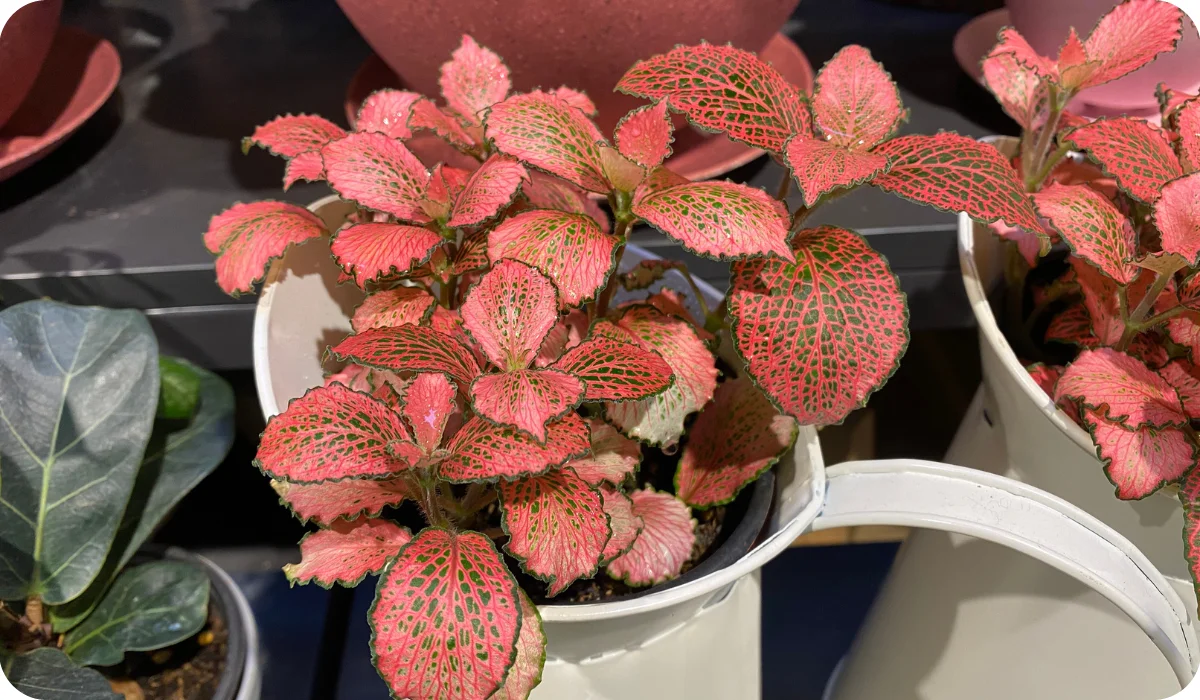
Fittonia Verschaffeltii Red Star Mosaic Plant In A Pot
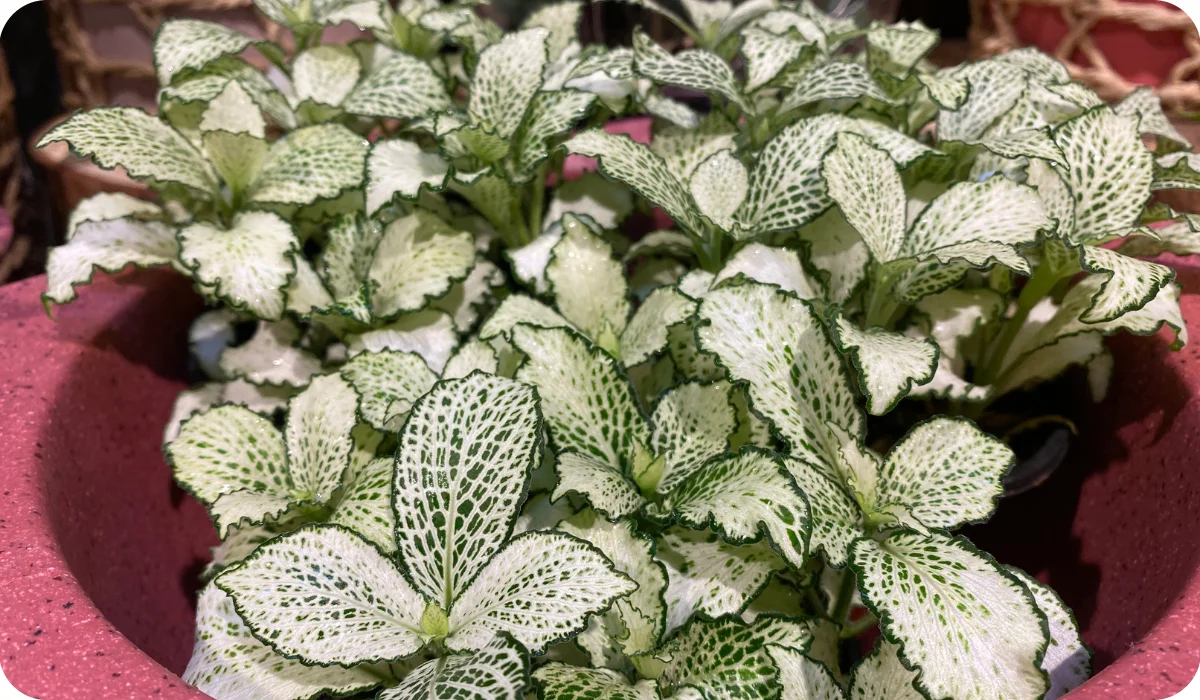
Fittonia Nerve Plant Verschaffeltii White Star Mosaic Plant In A Pot
Argyroneura Group:
- Fittonia ‘Angel Snow’: Bright green foliage with striking white veins and splotches.
- Fittonia ‘Frankie’: Dark green leaves adorned with pink veins and variegation.
- Fittonia ‘Leather Leaf’: Small cultivar with white veins on a dark green, leathery backdrop.
- Fittonia ‘Stripes Forever’: Striking dark green leaves with bold white veins, resembling stripes.
- Fittonia ‘Titanic’: Compact cultivar with oval leaves and beautiful greenish-white veins.
- Fittonia ‘White Anne’: Creamy white veins create an eye-catching contrast on dark green foliage.
- Fittonia ‘White Brocade’: Delicate white veins combined with heavier veining.
Verschaffeltii Group:
- Fittonia ‘Black Star’: Dark emerald green leaves with intense purplish-red veining.
- Fittonia ‘Fortissimo’: Larger leaves with medium to dark green color and pink to red veins.
- Fittonia ‘Juanita’: Bold red veins on larger leaves, showcasing stunning contrasts of color.
- Fittonia ‘Mini Red Vein’: Small fittonia with dark green leaves adorned with vibrant pink veins.
- Fittonia ‘Red Anne’: Medium green leaves covered in pink to red variegated veins.
- Fittonia ‘Red Star’: Striking deep pinkish-red veins forming a stripe-like pattern on dark green leaves.
- Fittonia ‘Ruby Red’: Compact cultivar featuring lanceolate leaves with equal amounts of deep red veins and a dark green backdrop.
Understanding Fittonia Plant Care
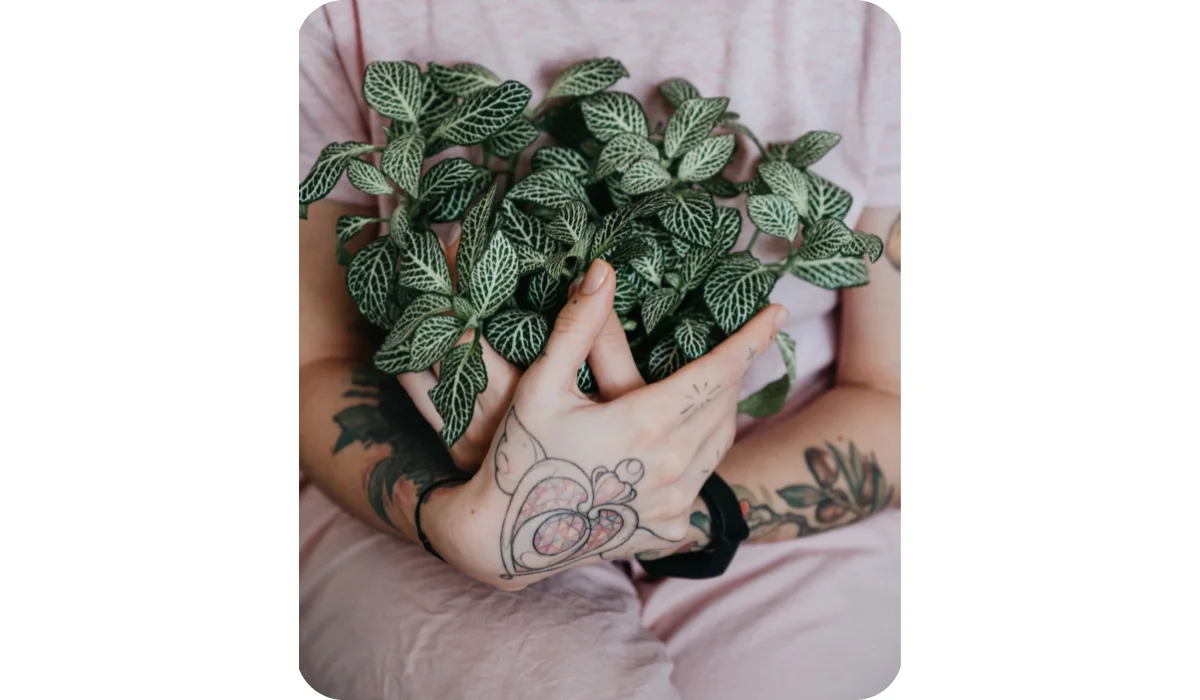
Light Requirements for Fittonia Plants
Fittonia plants thrive in bright, indirect light. Place them near a window with filtered sunlight or provide artificial grow lights. Avoid direct sunlight as it can scorch the leaves. Monitor the plant closely and adjust its placement to ensure it receives adequate light without being exposed to intense rays.
Optimal Temperature and Humidity Levels
Fittonia plants prefer temperatures between 65°F and 75°F (18°C-24°C). They are sensitive to cold drafts and temperature fluctuations, so it’s important to keep them away from doors and windows during colder months. As for humidity, Fittonia plants appreciate high humidity levels. Mist the leaves regularly or use a humidifier to maintain adequate moisture in the air.
Watering Techniques for Fittonia Plants
Proper watering is crucial for Fittonia plants’ health. They prefer consistently moist soil but are prone to root rot if overwatered. Water your Fittonia plant when the top inch of soil feels slightly dry to the touch. Avoid allowing the soil to dry out completely or become waterlogged. Adjust the watering frequency based on the specific needs of your plant and the prevailing environmental conditions.
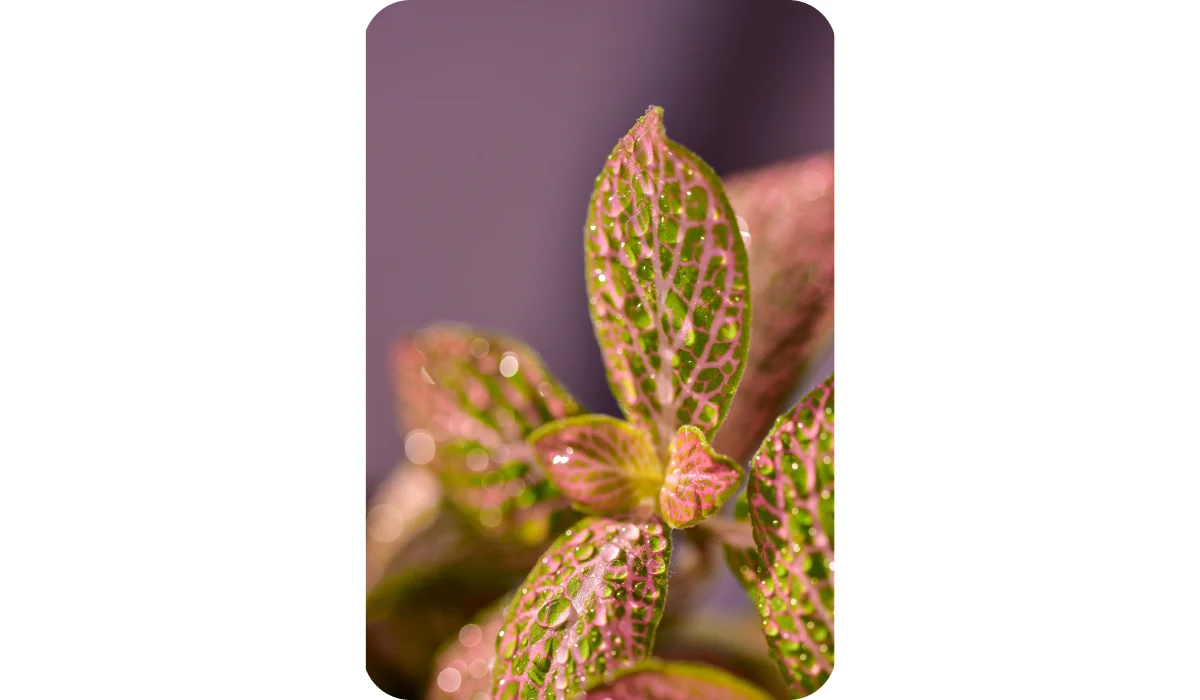
Green and Pink Fittonia Nerve Plant with Water Droplets
Choosing the Right Soil for Fittonia
Fittonia plants require well-draining soil that retains moisture without becoming overly saturated. Use a mixture of peat moss, perlite, and potting soil to create a well-balanced growing medium. This combination promotes adequate drainage while retaining the moisture necessary for healthy root development.
Fertilizing Tips for Healthy Growth
To promote healthy growth, feed your Fittonia plant with a balanced, water-soluble fertilizer diluted to half the recommended strength. Apply the fertilizer once a month during the growing season, which typically spans from spring to early fall. Remember to follow the instructions on the fertilizer packaging and avoid over-fertilizing, as it can lead to leaf burn.
Pruning and Propagation Methods
Regular pruning helps maintain the compact shape of Fittonia plants and encourages bushier growth. Trim back leggy or overgrown stems to promote a fuller appearance. Fittonia plants can be propagated through stem cuttings. Take 3-4 inch (7.5-10 cm) cuttings from healthy stems, remove the lower leaves, and place them in moist potting soil. Provide proper care, and the cuttings will root and develop into new plants.
Dealing with Common Pests and Diseases
Fittonia plants are generally resistant to pests and diseases. However, they can occasionally encounter issues such as aphids or fungal infections. Inspect your plants regularly and take prompt action if you notice any signs of infestation or disease. Treat affected plants with organic pest control methods or consult a gardening professional for appropriate solutions.
Potting and Repotting Fittonia Plants
Choosing the Right Pot for Fittonia Plants
Selecting the right pot is crucial for Fittonia plants’ growth and development. Choose a pot with drainage holes to prevent waterlogged soil. The pot should be appropriately sized, allowing room for root growth while avoiding excessive space. Opt for a lightweight pot material such as plastic or terracotta to ensure easy movement and proper moisture regulation.
Preparing the Potting Mix for Fittonia
Create a well-draining potting mix for Fittonia plants by combining equal parts peat moss, perlite, and potting soil. This mixture provides the necessary moisture retention and aeration for healthy root growth. Avoid using heavy or compacted soil that can hinder drainage and lead to root problems.
Step-by-Step Guide to Potting Fittonia
- Choose a pot with drainage holes and fill it one-third full with the prepared potting mix.
- Gently remove the Fittonia plant from its current container, taking care not to damage the roots.
- Place the plant in the new pot, ensuring it sits at the same depth as before.
- Fill the remaining space with the potting mix, gently firming it around the roots.
- Water the newly potted Fittonia thoroughly, allowing any excess water to drain away.
Repotting Techniques for Established Fittonia Plants
Fittonia plants generally require repotting every 1-2 years to provide fresh nutrients and adequate root space. Signs that a Fittonia plant needs repotting include roots growing through drainage holes or appearing crowded in the current container. Follow the same steps outlined above for potting, ensuring the new pot is slightly larger than the previous one.
Creating the Ideal Growing Environment
Indoor vs. Outdoor Cultivation of Fittonia
Fittonia plants are primarily cultivated indoors due to their preference for low-light conditions and high humidity. However, in tropical climates, they can be grown outdoors in shaded areas or as ground cover plants. It’s essential to protect outdoor Fittonia plants from direct sunlight, frost, and extreme weather conditions.
Placement and Positioning Tips
When placing Fittonia plants indoors, choose locations with bright, indirect light. Consider placing them near north or east-facing windows, where they can receive filtered sunlight. Avoid placing them in areas with direct sunlight, as it can scorch the leaves. Rotate the plant periodically to ensure all sides receive adequate light and prevent uneven growth.
Enhancing Humidity Levels for Fittonia Plants
Fittonia plants thrive in humid environments. To increase humidity levels, place a tray filled with water near the plant, ensuring the pot is not in direct contact with the water. Alternatively, use a room humidifier or group plants together to create a microclimate with higher moisture levels. Regularly misting the leaves also helps maintain humidity.
Protecting Fittonia from Extreme Temperatures
Fittonia plants are sensitive to temperature extremes. Avoid placing them near drafts, air conditioning vents, or heating sources. During colder months, keep them away from cold windows and doors to prevent chilling. Likewise, protect them from direct exposure to cold air during winter and hot, dry air from heaters in winter.
Nurturing Fittonia: Tips and Tricks
Providing Adequate Air Circulation
Fittonia plants benefit from gentle air circulation to prevent stagnant air and reduce the risk of fungal diseases. Position them in a room with good air movement, but avoid placing them in drafty areas. You can use a small fan set on low to promote air circulation around the plant.
Supporting Fittonia Growth with Stakes or Trellises
Fittonia plants typically have trailing growth habits. If you want to encourage upward growth or support trailing stems, provide stakes or trellises. Gently tie the stems to the support structure using soft plant ties or twine. This helps maintain an upright or controlled shape and prevents the plant from trailing on the ground.
Regular Maintenance and Cleaning
Regular maintenance is essential for the health and appearance of Fittonia plants. Remove any yellow or damaged leaves promptly to maintain a tidy appearance. Wipe the leaves with a damp cloth occasionally to remove dust and debris, which can hinder their ability to photosynthesize effectively.
Seasonal Care and Adjustments
Fittonia plants may require some seasonal care adjustments. During the active growing season, provide slightly more water and increase fertilization frequency. In winter or colder months, reduce watering frequency and avoid overwatering. Monitor the plant’s response to environmental changes and adjust care accordingly.
Fittonia as a Decorative Houseplant
Complementing Interior Design with Fittonia
Fittonia plants can serve as attractive decorative elements in your home. Their vibrant foliage adds a touch of color and liveliness to any space. Choose pots that complement your interior design style and consider grouping Fittonia plants with other houseplants to create visually appealing arrangements.
Showcasing Fittonia with Creative Displays
Get creative with displaying your Fittonia plants. Consider using hanging baskets, wall-mounted planters, or terrariums to showcase their trailing growth habit. Mix and match different Fittonia varieties to create visually striking combinations of contrasting leaf colors and patterns. Experiment with different arrangements to find what suits your style and space.
Fittonia Plants in Terrariums
Fittonia plants are well-suited for terrariums due to their compact size and high humidity requirements. Choose a glass terrarium with a lid to create a mini greenhouse effect. Plant Fittonia along with other moisture-loving plants and add decorative elements like small pebbles or figurines to enhance the terrarium’s visual appeal.
Frequently Asked Questions (FAQs)
- Does Fittonia need sunlight? Fittonia (nerve plant) prefers bright, indirect light. While it doesn’t require direct sunlight, it thrives in well-lit environments. Place your Fittonia plant in a location with ample natural light, such as near a north-facing window. This will help it maintain its vibrant foliage without the risk of sunburn.
- How do you take care of a Fittonia plant? To care for a Fittonia plant, follow these steps:
- Light: Place the plant in a location with bright, indirect light to maintain its vibrant foliage.
- Humidity: Fittonia plants prefer high humidity. Increase humidity by misting the leaves regularly or using a pebble tray filled with water beneath the pot.
- Watering: Keep the soil consistently moist, but avoid overwatering. Water when the top inch of soil feels slightly dry.
- Temperature: Maintain temperatures between 60-80°F (15-27°C), avoiding drafts and extreme temperature fluctuations.
- Fertilization: Feed the plant with a balanced houseplant fertilizer once a month during the growing season.
- Pruning: Trim leggy or yellowing stems to promote bushier growth.
- Propagation: Propagate Fittonia plants through stem cuttings placed in a moist potting mix until roots develop.
Following these care tips will help your Fittonia plant thrive and stay healthy.
- How often should you water a Fittonia? Water your Fittonia plant when the top inch of soil feels slightly dry. Stick your finger into the soil to check its moisture level. If it’s dry at the top, it’s time to water. However, ensure proper drainage to prevent waterlogging. Overwatering can lead to root rot, so it’s essential to maintain moist but not soggy soil. Adjust your watering frequency based on the plant’s needs and the environmental conditions in your home.
- How long do Fittonia plants live? With proper care, Fittonia plants can live for several years. However, their lifespan can vary depending on various factors such as growing conditions, care routine, and genetics. By providing the ideal environment, regular watering, proper lighting, and appropriate fertilization, you can extend the lifespan of your Fittonia plant and enjoy its beauty for years to come.
- How to grow a nerve plant? To grow a nerve plant (Fittonia), follow these steps:
- Start with a healthy Fittonia plant or obtain stem cuttings.
- Prepare a well-draining potting mix suitable for houseplants.
- Place the stem cuttings in the potting mix, burying the lower nodes to encourage root development.
- Water the cuttings and cover them with a plastic bag or dome to create a humid environment.
- Keep the cuttings in a warm location with bright, indirect light.
- Maintain humidity by misting the cuttings or using a humidity tray.
- After roots have developed, remove the plastic cover and continue caring for the plants as mature Fittonia plants.
- Provide regular watering, humidity, and appropriate light conditions to promote healthy growth.
Following these steps will help you successfully grow a beautiful nerve plant.
- Is Fittonia an indoor plant? Yes, Fittonia, also known as the nerve plant, is well-suited as an indoor plant. It thrives in the controlled environment of a home or office. Fittonia’s attractive foliage and compact growth make it a popular choice for indoor gardening. Its tolerance for lower light levels and ability to thrive in humid conditions make it an excellent addition to indoor spaces.
- Nerve plant indoor or outdoor? Fittonia, commonly known as the nerve plant, is primarily an indoor plant. It prefers the stable conditions of indoor environments, such as temperature, humidity, and light levels. While it can survive in outdoor settings with the right conditions, it is generally recommended to grow Fittonia indoors to ensure its optimal growth and health.
- Is Fittonia a lucky plant? Fittonia plants are not traditionally considered lucky plants in cultural beliefs or superstitions. However, they are admired for their stunning foliage and are believed to bring a sense of tranquility and beauty to indoor spaces. Considered lucky or not, the presence of Fittonia plants can enhance the aesthetics and ambiance of your home or office.
- Can Fittonia grow from cuttings? Yes, Fittonia can be easily propagated from stem cuttings. Take healthy stem cuttings from an existing plant, making sure they have several nodes. Place the cuttings in a moist potting mix, burying the lower nodes. Maintain high humidity and provide indirect light until roots develop. Once rooted, the cuttings can be potted individually, and with proper care, they will grow into new Fittonia plants.
- How often to water nerve plant? The watering frequency for a nerve plant (Fittonia) depends on factors such as temperature, humidity, and potting mix. As a general guideline, water your nerve plant when the top inch of soil feels slightly dry. Stick your finger into the soil to check its moisture level. If it’s dry at the top, water the plant thoroughly, allowing excess water to drain out. Avoid overwatering, as it can lead to root rot. Regularly monitor the plant’s moisture needs and adjust your watering schedule accordingly to keep the soil consistently moist but not waterlogged.
Conclusion
Fittonia plants, or Nerve Plants, are stunning and versatile houseplants that can thrive in various indoor environments. By providing the right growing conditions, including proper lighting, humidity, watering, and regular care, you can enjoy the beauty and benefits of these captivating plants. Whether you choose to grow them individually or incorporate them into creative displays, Fittonia plants are sure to add a vibrant touch to your home decor while improving air quality and creating a soothing ambiance.
For a wide selection of fertilizers and soil amendments suitable for all these plants, we invite you to explore our esteemed webstore at www.shehrikisaan.com. Our webstore offers a comprehensive range of products designed to enhance the growth and vitality of your plants. Whether you’re seeking specialized fertilizers, organic amendments, or premium-quality soil enhancers, our webstore is your one-stop destination. With our commitment to providing garden enthusiasts with top-notch products, you can trust us to cater to your gardening needs effectively. Visit www.shehrikisaan.com today and unlock the secret to flourishing plants.
Discover our Social Media Presence and web store. Choose your favourite platforms:











